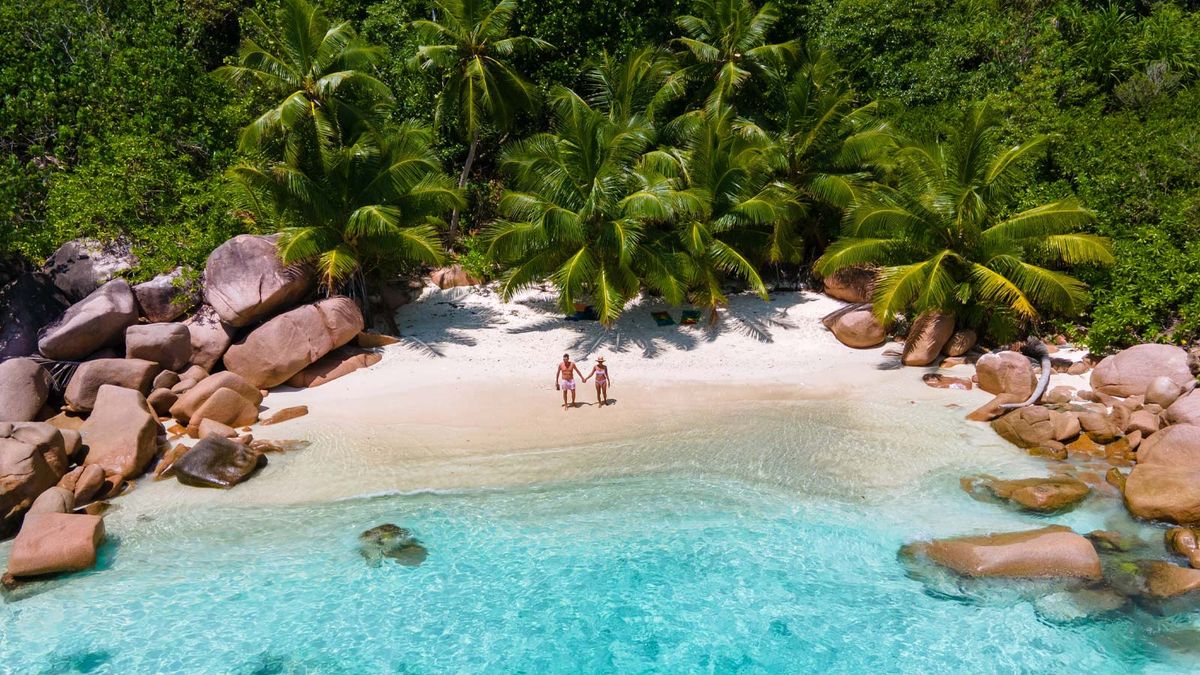Snapshots
Whenever I thought of Seychelles, I pictured myself lazing on white-sand beaches, watching turquoise waters and fiery sunsets while sipping local beer. When I visited this gorgeous country last month, it not just lived up to this image but surpassed it. An archipelago of 115 islands along the Indian Ocean, this happens to be the smallest country in Africa. While the picture postcard beaches are its main draw, I was surprised that there are so many things to do in its three main and most popular islands–Mahe, Praslin, and La Digue. What struck me was the lush green that contrasts with the blue as Seychelles is also home to rolling hills and mountains. If you’re planning to spend a week here, like I did, then these experiences should be on your Seychelles bucket list.
1. Anse Lazio Beach, Praslin Island

After landing in Mahe (the only international airport in the country), I took a short 15-minute ride in a propeller aircraft to the second largest island in Seychelles—Praslin, which is famed for its world class beaches. My first encounter was with the famous Anse Lazio beach on the northwest tip of the island. As I approached it, I could hear the waves crashing along the shore, and although the water seemed rough that didn’t stop me and my fellow travellers from entering.
Stepping inside (despite not knowing how to swim) I paused to take in the vista–the vast endless ocean, soft sand, imposing granite boulders, and swaying coconut and palm trees. It seemed as if I was inside a painting. No wonder this beach has been rated as one of the best in the world time and again in several surveys. After spending an hour in the water, I just lay on the sand watching the world go by. There are no shacks on the beach or lounge chairs, so people spread their towels and carry munchies and drinks. But there are restaurants away from the beach that overlook it–at lunchtime I indulged in seafood at Mabuya Restaurant, which offers enchanting views of the beach.
2. Vallée de Mai Nature Reserve, Praslin Island

It is at this nature reserve, a UNESCO World Heritage Site, that I understood the significance of the famous Coco de Mer nut—which by the way is the visa stamp for the country and its national fruit. It is the world’s largest and heaviest nut. The reserve is the only place on earth where the Coco de Mer palms grow, interestingly in both male and female varieties. While the male one is long and shaped like a phallus, the female one resembles a woman’s posterior or bottom. Strolling along the shortest of the three trails within the reserve, I came across six types of gigantic palm trees. My guide revealed that many years ago the entire tree used to be cut just to get to its heart, which was then tossed into a salad. Since only the rich could afford it, it was called ‘Millionaire Salad’. If you are lucky, you can also spot the rare black parrot here, but it eluded me.
3. Kayaking in a glass bottom boat, La Digue Island
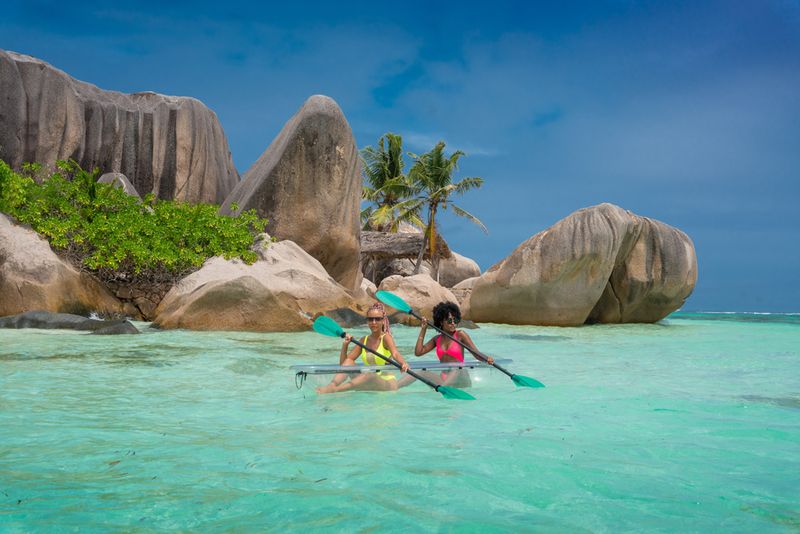
At Anse Source d'Argent—one of those picture-perfect beaches with massive boulders, palm and coconut trees, and emerald waters—kayaking on a glass bottom boat at the lagoon is a great way to soak in its beauty from the middle of the water. Our guide Mati from Crystal Water Kayaks took our kayaks to three points from where we got brilliant views. Anse Source d'Argent, which happens to be one of the most photographed beaches in the world, stands out because of the grand granite rocks that look chiseled. The rock formations are really fascinating and if you look carefully, they resemble a shark, the Coco de Mer, and even two kissing rocks.
4. Giant Aldabra Tortoises at L’Union Estate Park, La Digue Island
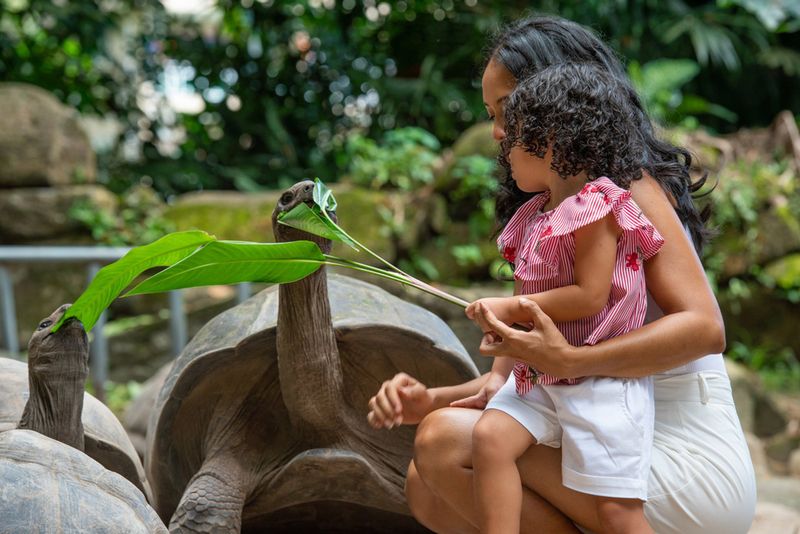
This is your chance to look at some of the largest tortoise species in the world–the shell of the male tortoise can be as long as four feet. Frankly I was taken aback by their sheer size. Moving ever so slowly in their enclosure, they happily munched on the leaves that visitors offered them. They live for about 200 years and can weigh up to 250 kilos due to their size. It was fun to feed this rare species that is mostly found in this country.
5. Local rum tasting, Mahe
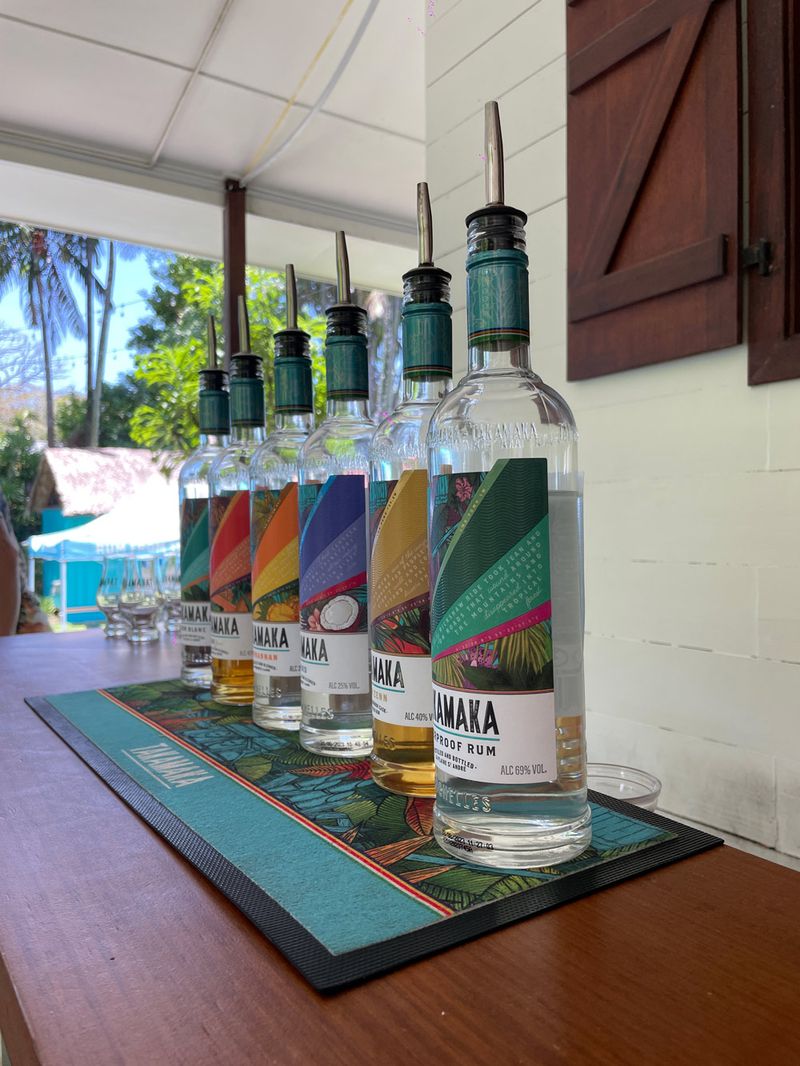
The best way to understand and enjoy a destination is to eat and drink like the locals. Seychelles is famous for its rum with Takamaka being the most popular brand. A visit to the distillery is a great way to see how it’s made and get a taste as well. The one-hour tour starts at the spice and herb garden (many of them find their way into the rum) and moves on to the tortoise pen with two giant Aldabra tortoises named Taka and Maka. I saw how the rum is distilled and stored, and also visited a small museum which explains how it all started. Finally, it was time for the tasting. We had six varieties–rum blanc, pineapple, coconut, dark spiced, Rum Zenn, and overproof. My favourite was the dark spiced variant.
6. Victoria Market and its vicinity, Mahe

Located in Mahe, Victoria is one of the world’s smallest capital cities that you can cover in less than a day. The white clock tower in the middle of a cross section is a replica of the one at Victoria Station in London and was created in memory of Queen Victoria in 1903 when Seychelles was under British rule. With the ‘I Love Seychelles’ sign just opposite, it is common to see tourists roaming around for selfies and pictures here. Do visit the National History Museum to understand how this nation was first ruled by the French and then the British before it became independent in 1976. A visit to the covered Victoria Market—that sells everything from fruits, vegetables, and seafood to souvenirs is a must, not just to pick up souvenirs but to see what the locals shop for. I came home with the country’s famed vanilla essence.
7. Mission Lodge, Mahe
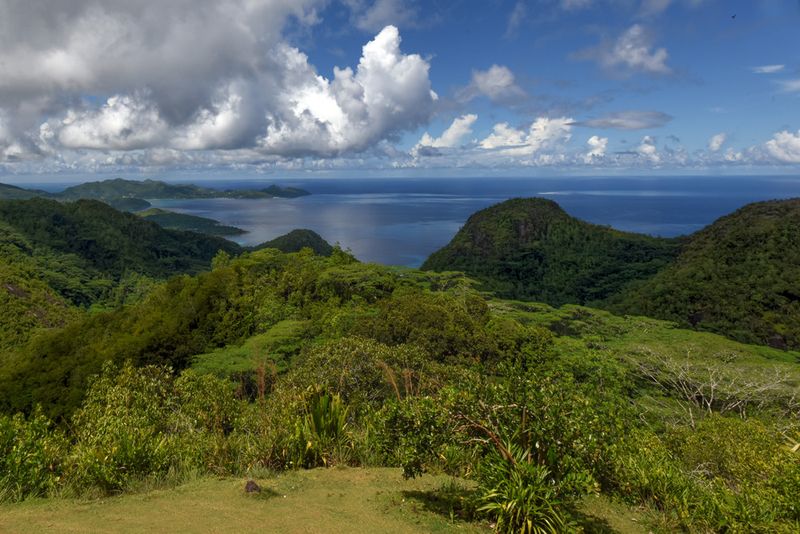
The sea and horizon were blending into each other. As I sat on the bench quietly for five minutes, taking it all in, I noticed that it started raining on the opposite side. I was surrounded by peaks with the Indian Ocean spread out before me. I was at Mission Lodge, perched at a height of 1640 feet above sea level and the best place in Seychelles to get a bird’s eye view of the ocean and the mountains. This was a former boarding school for children of freed slaves. Queen Elizabeth II had tea here with a few officials when she visited Seychelles in 1972. It’s a great spot for creating an unforgettable memory of this lovely country.
8. Local Créole cuisine

When I took a bite of the prawn in Creole curry during my first meal in Seychelles, the flavours seemed so familiar. Made with turmeric, coconut milk, cinnamon, and curry leaves, it reminded me of the curry I eat when I visit South India. That’s when I realised the Creole cuisine borrows heavily from Indian, African, Chinese and even a bit of European cuisine. Seafood is what they love eating; but apart from that rice, coconut milk, tamarind, spices and seasonings are used liberally in their food. Octopus curry is very popular, and they make very good octopus salad as well. Breadfruit is a green textured fruit that can be consumed in many ways. I particularly enjoyed the deep-fried version in the form of croquettes. There are many restaurants in the three islands that serve this cuisine. In Mahe I enjoyed it at Marie Antoinette restaurant.


